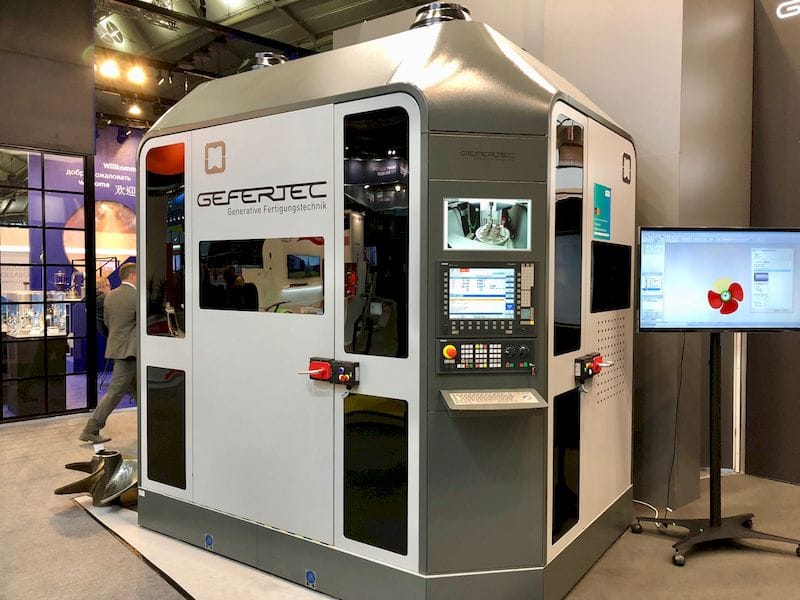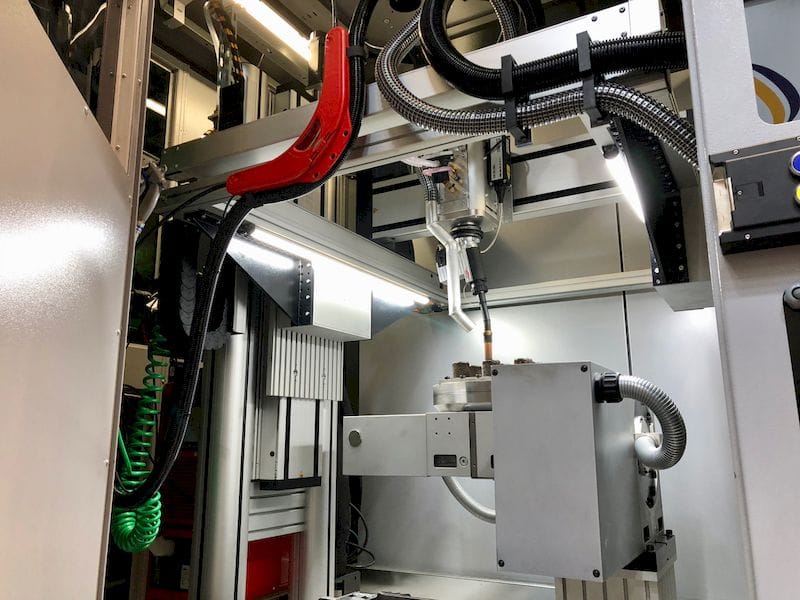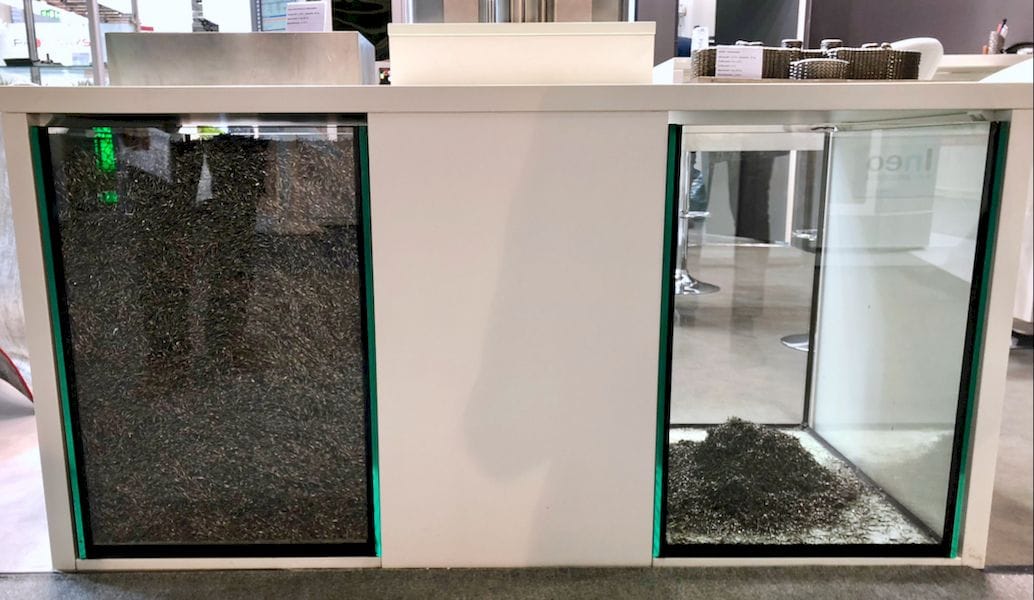
There are now plenty of 3D metal printers available, and Gerfertec’s is a bit different.
Gerfertec is a startup company only two years old; currently they have around 25 staff. The Berlin-based company is targeting metal workshops who use CNC equipment. How do they do so? Their 3D metal printer, the GTarc, is a 3D metal printer hidden inside what looks and operates like a traditional CNC machine.
Here’s how it works: the GTarc uses a 3D welding process, essentially a MIG welder on a 5-axis platform, deposits a coarse bead of metal material into a rough 3D shape. Then the GTarc engages its onboard CNC milling toolhead to finish the part by shaving down its surfaces to perfection.

At FormNext, where we visited with Gerfertec, they displayed a very interesting example part scenario that was clearly designed to shock traditional metal workshops.
Below you can see three images. The top is where a traditional metal workshop would begin: a solid metal slab. This would be CNC milled down to the final part.

However, in the middle image, we have the rough 3D metal printed version of the part as deposited by the GTarc system. Finally, we see the final CNC milled part at the bottom.

Here’s the shocking part: this image shows the amount of milled off material for two approaches to produce this part. On the left is the amount of material removed if using only traditional CNC milling, while on the right we see the wastage from CNC milling when combined with 3D metal printing. The difference is quite dramatic and certainly would attract the attention of those familiar with CNC milling. Gerfertec says it contrasts 80% waste vs. only 28%.
The GTarc system is quite fast, able to deposit around 500cc of metal material per hour, and since it uses standard welding technology, there is a wide variety possible materials, including, for example, aerospace grade titanium.
It’s also possible to change the material, which Gerfertec explains takes only two minutes. This makes sense as there is no awkward metal powder to deal with.
While this system has some obvious advantages, it also has some disadvantages. In particular the 5-axis CNC approach implies that only 5-axis CNC compatible geometries can be attempted. In other words, if you can’t use a CNC to mill the same object from a block, you can’t make it with the GTarc.
However, I don’t think that’s a serious limitation, because there are plenty of metal parts that would pass this test – that’s what all the world’s CNC metal shops make today. So there is plenty of market for Gerfertec to address.
Resolution is also an interesting aspect. You might think that the rather coarse 3D printing would impose a resolution limit, but it is overcome with the post-print milling system, which could create structures as small as a CNC can produce.
We’re told the small version of the GTarc, with build volume of 400mm x 450mm tall is priced at €400,000 (USD$480,000). There is a more expensive larger unit available as well.
Via Gerfertec (German)

